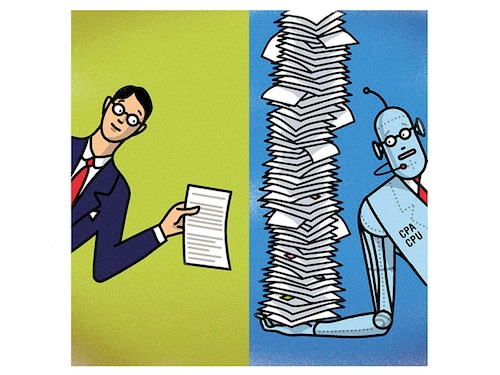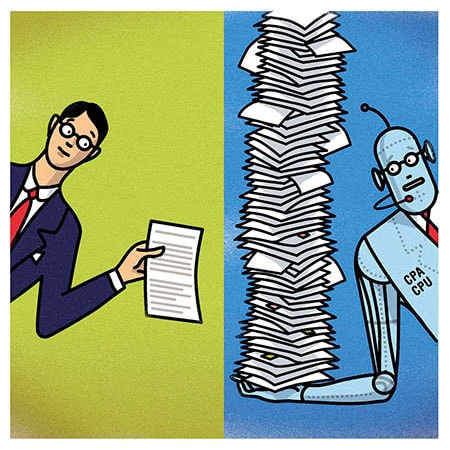Forbes @ 100: Don't mess with taxes
William Baldwin on a century of income tax, one of the economy's most ironic job creators



Illustration: Christoph Hitz for Forbes
It was just a nibble when the federal income tax started in 1913. The first 1040 had seven brackets, ranging from 1 percent to 7 percent. It raised $28 million, a bit less than a dollar per employed citizen. The instructions were a page long.
Today, when we look out at the business of collecting income tax, we see a mighty industry. It employs CPAs, lawyers, bookkeepers, TurboTax coders, collectors, enrolled agents, congressional staffers, pontificaters and, of course, journalists. No doubt some lucky person was hired to replace that IRS ethics lawyer disbarred in 2015 for dishonesty. And lobbyists get hired to protect the favouritism accorded, from the earliest days, to real estate and insurance. Taylor Swift once got a job performing at a fundraiser for Kevin Brady, chairman of the House Ways & Means Committee.
Yet, other federal employees can be thankful that we don’t have a flat tax—particularly the ones who calculated, as required under the Paperwork Reduction Act, that a taxpayer claiming the Empowerment Zone Employment Credit will need two hours and 22 minutes to learn about Form 8844 and two hours and 33 minutes to fill in the numbers.
The Tax Foundation estimates that Americans spend 8.9 billion hours a year on taxes, the equivalent of 5 million full-time jobs. Do get that empowerment credit right. You must apply it after the Indian coal production credit and before the alternative fuel vehicle refuelling property credit.
To help out, the IRS has 2,113 forms and explanatory pamphlets. What can be deducted as a business expense? The code says “necessary” expenses can be claimed, and the IRS spells out this nuance in one of its guides: “An expense doesn’t have to be required to be considered necessary.” If you have difficulty understanding that, well, so did Leona Helmsley, the late hotelier who claimed too many expenses and was convicted of tax fraud in 1989.
On occasion, Capitol Hill, feeling remorse, moves to strip away some of the complexity. Simplification was one of the stated goals for the Joint Committee on Taxation when it was created in 1926 at the urging of Senator James Couzens (after he dealt with a little IRS problem of his own, a $10 million bill for unpaid taxes).
Despite the committee’s efforts, the code got bigger. And bigger. In 1986, the Congress resolved to make a clean sweep by limiting deductions and lowering rates. The landmark Tax Reform Act that resulted was the signature accomplishment of then-Ways & Means chairman Dan Rostenkowski, before he was jailed on corruption charges.
Alas, once again rates crept up and new deductions crept in. Wolters Kluwer Tax & Accounting counts 5,886 changes by the Congress to the tax code since 2001. But Ways & Means members are happy. The Center for Responsive Politics counts among their bigger sources of campaign cash the National Association of Realtors and Mass Mutual Life Insurance.
Now on the table: A sweeping overhaul that would eliminate deductions and lower rates. Could it happen? Perish the thought. If we had a flat tax, who would buy tickets to a Kevin Brady fundraiser?
William Baldwin was the editor of Forbes from 1999 to 2010
First Published: Nov 03, 2017, 07:37
Subscribe Now